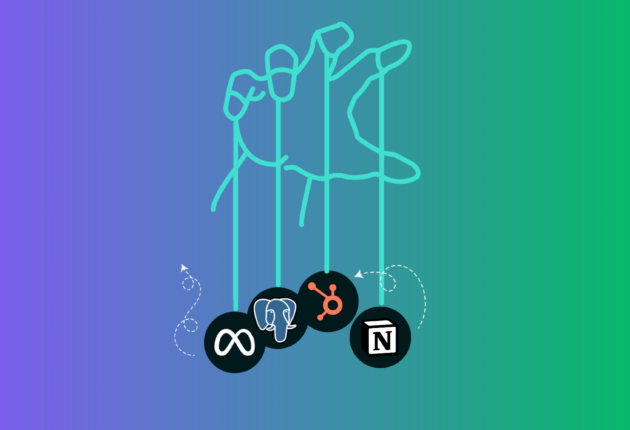Introduction
Data has become the lifeblood of organizations, driving critical decision-making and powering innovative solutions. However, this increased reliance on data has also made it a prime target for cybercriminals, making data security a top priority for businesses of all sizes. A well-crafted data protection policy is a crucial component of an organization’s overall security strategy, providing a comprehensive framework for safeguarding sensitive information and ensuring compliance with regulations.
The importance of data protection policies cannot be overstated. With the increasing volume and complexity of data, the risk of data breaches and cyber-attacks has never been higher. This article explains what data protection policies are and will help you understand their importance and advantages, as well as how to build a strong one for your organization.
What Is a Data Protection Policy?
A data protection policy (DPP) is a document that outlines an organization’s plan for handling and securing the data it collects, typically focusing on personal information. While not always required by law, a DPP is a crucial part of data security and helps ensure compliance with data protection regulations.
DPPs are internal documents often used by companies to inform employees and relevant parties on how to handle data correctly. They are distinct from privacy policies, which are external documents that inform users about how their data is collected and used.
Data Protection Policy & Privacy Policy
Data protection and privacy policies are inseparable concepts, both fundamental for user trust and responsible data handling. While they may sound interchangeable, they have distinct purposes. A data protection policy (DPP) acts as an internal rulebook outlining how the organization handles data, particularly personal information. It details security measures, employee training, and breach response protocols to ensure compliance with data protection regulations. Think of it as a blueprint for data governance within the organization.
On the other hand, a privacy policy is an external document that faces users and customers. It informs them about what data is collected, how it’s used for purposes like personalization or marketing, and, importantly, what rights they have over their information. This includes the ability to access, rectify, or even request deletion of their data. In essence, the privacy policy translates the organization’s data protection practices into user-friendly terms, fostering transparency and building trust.
Why are Data Protection Policies Important?
- Compliance: Data privacy regulations are becoming increasingly stringent worldwide. A DPP demonstrates an organization’s commitment to adhering to these regulations, such as the General Data Protection Regulation (GDPR) in Europe or the California Consumer Privacy Act (CCPA) in the United States.
- Transparency: A DPP fosters trust between an organization and its customers by clearly explaining how their data is handled. This transparency allows individuals to make informed decisions about sharing their information.
- Security: A well-crafted DPP outlines the security measures implemented to safeguard personal data from unauthorized access, accidental loss, or misuse. This includes encryption, access controls, and incident response protocols.
- Accountability: A DPP establishes a framework for accountability within an organization. It ensures that employees understand their responsibilities regarding data handling and compliance with privacy regulations.
Key Elements to Include in Your Data Protection Policy
A strong DPP is essential for any organization that collects personal data. It outlines the rules and procedures for handling this data responsibly, ensuring compliance with regulations, and building trust with users. Here are some key elements to include in your DPP:
1. Scope and Applicability
Define what types of data your policy covers and to whom it applies.
2. Data Protection Principles
Articulate your commitment to data protection principles like those outlined in GDPR or other relevant regulations. These principles typically include:
- Lawfulness, fairness, and transparency: Data collection must be lawful, fair, and transparent to the data subject.
- Purpose limitation: Data should only be collected for specific, explicit, and legitimate purposes.
- Data minimization: Collect only the minimum data necessary for the intended purpose.
- Accuracy: Maintain accurate and up-to-date data.
- Storage limitation: Data should not be kept longer than necessary.
- Integrity and confidentiality: Implement appropriate security measures to protect data.
- Accountability: The organization is accountable for its data protection practices.
3. Data Collection and Processing
Explain how you collect personal data, the legal basis for such collection (e.g., consent, contractual necessity), and the purposes for which the data will be used.
4. Data Security
Outline the technical and organizational measures you take to safeguard data, including access controls, encryption, and incident response procedures.
5. Data Retention and Disposal
Specify how long you will retain different data types and your procedures for securely disposing of them when no longer needed.
6. Data Subject Rights
Inform users of their rights under data protection regulations, such as the right to access, rectify, erase, or restrict the processing of their data. Explain how they can exercise these rights.
Data Peace Of Mind
PVML provides a secure foundation that allows you to push the boundaries.

Implementing a Data Protection Policy
Implementing a data protection policy is not just about drafting a document; it’s about embedding it into the fabric of your organization’s operations. Here are key steps to ensure effective implementation:
1. Incorporate into the Staff Handbook
Ensure the data protection policy is included in the staff handbook. Employees should be familiarized with it and understand their obligation to comply.
2. Provide a Digestible Summary
If the policy is lengthy, offer a condensed version highlighting key points and practices for easy understanding and reference by staff.
3. Conduct Training and Supervision
Equip staff with necessary training tailored to their roles and responsibilities. Supervision ensures adherence to data protection standards in daily operations.
4. Inform Third Parties
External contractors and partners involved in your organization’s operations must also adhere to data protection standards. Provide them with the policy and incorporate relevant clauses in contracts to enforce compliance.
Benefits of Implementing a Data Protection Policy
- Reduced risk of regulatory fines: Compliance with data privacy regulations minimizes the risk of hefty fines for non-compliance.
- Enhanced customer trust and confidence: Transparency in data handling fosters trust with customers, potentially leading to increased loyalty and customer satisfaction.
- Competitive advantage: In today’s privacy-conscious world, a strong commitment to data protection can be a significant competitive differentiator.
- Improved data management practices: A DPP encourages organizations to develop organized and efficient data management processes.
Best Practices for Building Your Data Protection Policy
1. Understand Applicable Regulations
Familiarize yourself with relevant data protection laws and regulations such as GDPR, CCPA, HIPAA, etc. Ensure that your policy complies with these regulations.
2. Identify Data
Clearly define the types of data your organization collects, processes, stores, and transmits. Classify data based on its sensitivity and importance to your organization.
3. Risk Assessment
Conduct a thorough risk assessment to identify potential vulnerabilities and threats to your data. Evaluate the impact and likelihood of these risks occurring and prioritize them accordingly.
4. Access Controls
Implement strong access controls to restrict access to sensitive data. Only authorized personnel should have access to such information, which should only be granted on a need-to-know basis.
5. Data Minimization
Collect and retain only the data that is necessary for your organization’s operations. Minimize the personally identifiable information (PII) you collect and store.
6. Data Encryption
Encrypt data both in transit and at rest to protect it from unauthorized access. Use strong encryption algorithms and ensure that encryption keys are securely managed.
7. Employee Training and Awareness
Provide regular training to employees on data protection best practices, including how to handle sensitive data securely and recognize and report potential security incidents.
Conclusion
A data protection policy is an indispensable component of an organization’s overall security strategy. It serves as a comprehensive framework for safeguarding sensitive information, ensuring compliance with regulations, and fostering trust with users. The importance of DPPs cannot be overstated, given the increasing volume and complexity of data and the corresponding rise in data breaches and cyber-attacks.
Implementing a DPP is a multi-step process that involves incorporating it into the staff handbook, providing a digestible summary, conducting training and supervision, informing third parties, and ensuring compliance. The benefits of implementing a DPP are manifold, including reduced risk of regulatory fines, enhanced customer trust and confidence, competitive advantage, and improved data management practices.
DPP is a powerful tool that can help organizations navigate the complex landscape of data protection and privacy, ensuring they handle data responsibly and ethically. By prioritizing data protection, organizations can mitigate risks and create a culture of trust and responsibility that benefits everyone involved. Therefore, regardless of size or industry, every organization should invest time and resources in developing and implementing a strong data protection policy.










